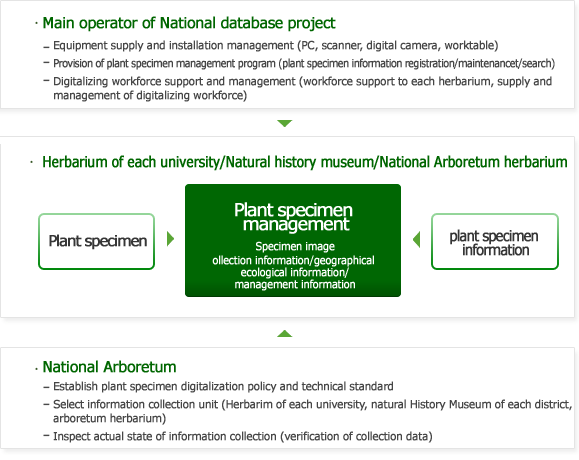- 글로벌메뉴
- KOREAN

 Korea Biodiversity Information System > Plant Resource > Plant Specimens > Introduction to Plant Specimens
Korea Biodiversity Information System > Plant Resource > Plant Specimens > Introduction to Plant Specimens
Specimen information from institutes was gathered with the aim of creating a digital database of one million specimen samples held by university herbariums and research centers. Currently 750,000 specimens are available. (2012 November)

Main operator of national database project
Herbarium of each university/natural history museum/national arboretum herbarium
National Arboretum
The National Biodiversity Information System is mainly divided into three search methods: searches by name, organization, and detailed search. The search methods are as follows


